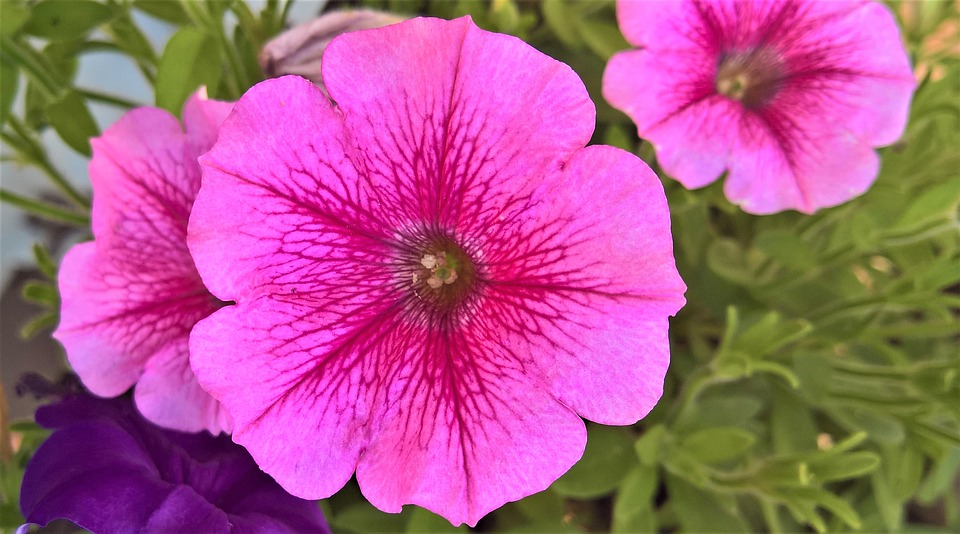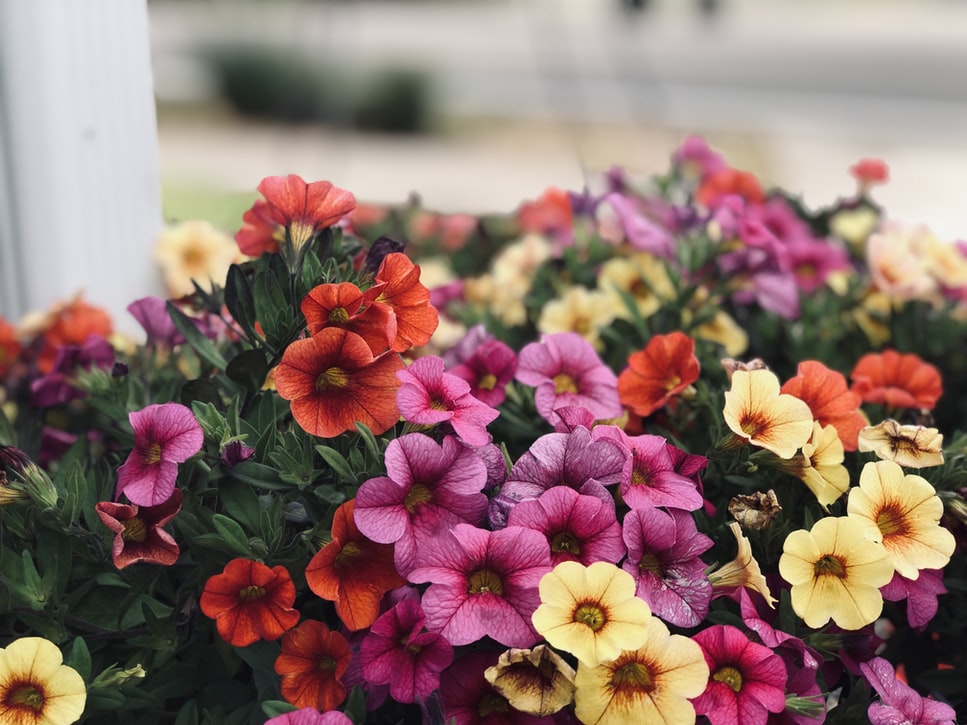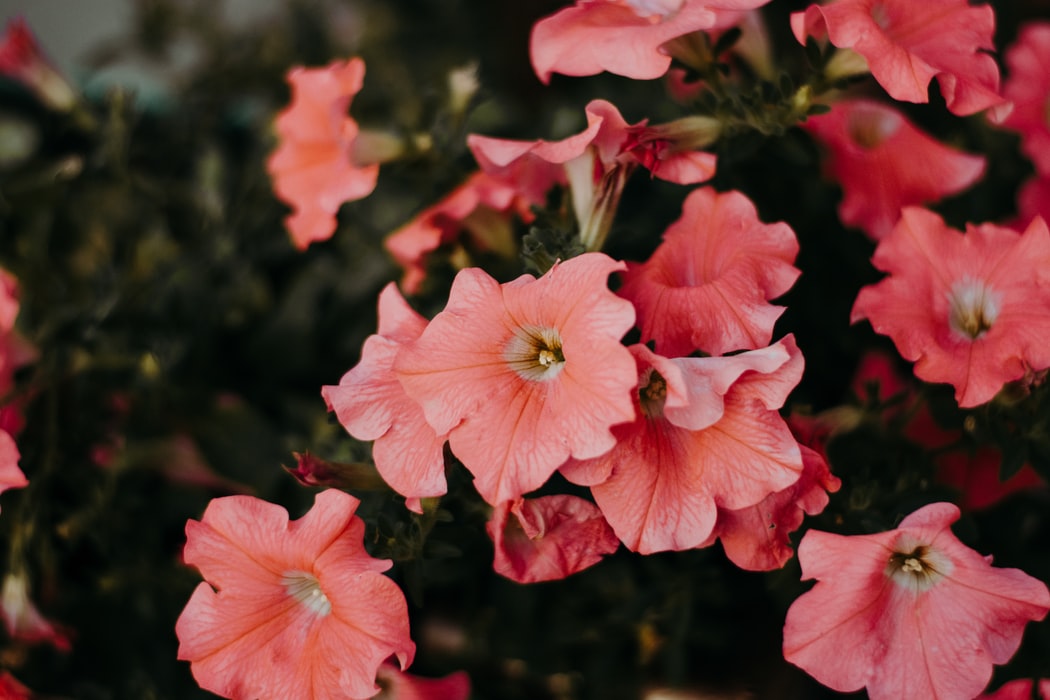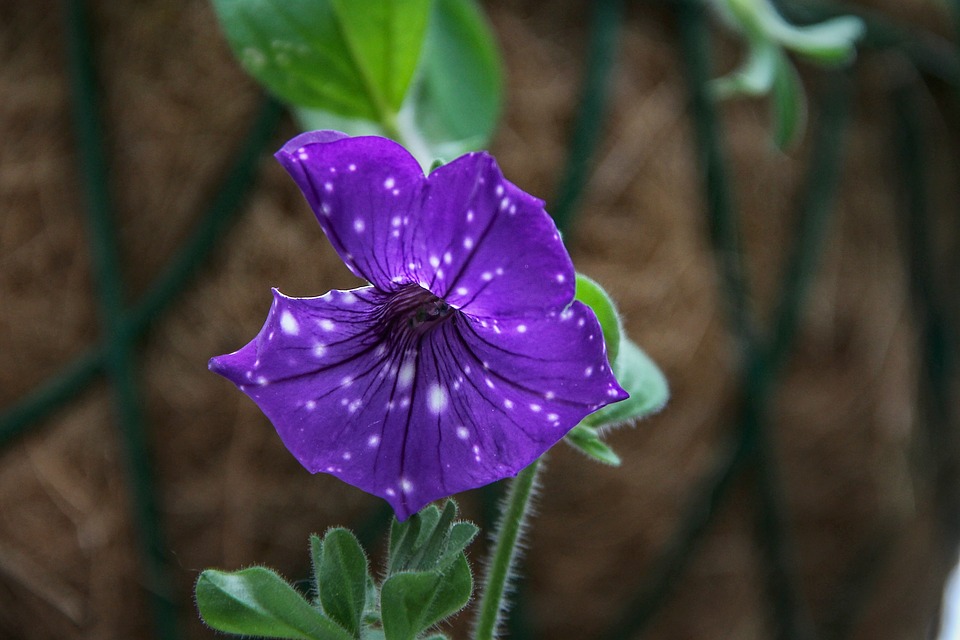
Do you include hanging baskets in your landscape? It’s hard not to love them. The combinations of what to include are endless. One of the most appealing characteristics is the baskets can be made of plastic with a wire hangar, in other words, how you are apt to find them at Lowe’s or other garden centers, decorative wrought iron or wire with a coco liner, or even wicker.
As a bonus, they can take your eye to new heights, literally. I have shepherd’s hooks that are four feet tall and some that are eight feet tall, and several sizes in between. They add an interesting dimension to your garden.
Endless combinations
You can use almost any plant in a hanging basket, including perennials. I’ve used daylilies and ivy leaf geraniums, sweet potato vines, and coleus, purslane, vinca, begonias, fuschia, and petunias, creeping jenny, and ivy. The rule of thumb for planting a container applies well to planting hanging baskets, a thriller, a filler, and a spiller, or even just a beautiful spiller.
I usually don’t do a single variety planting in one container but this year I put one deep pink petunia in a 16″ wire basket with a coco liner, and boy is she happy! Kinda lonely in the beginning but now spreading, as they do, and spilling down all sides.
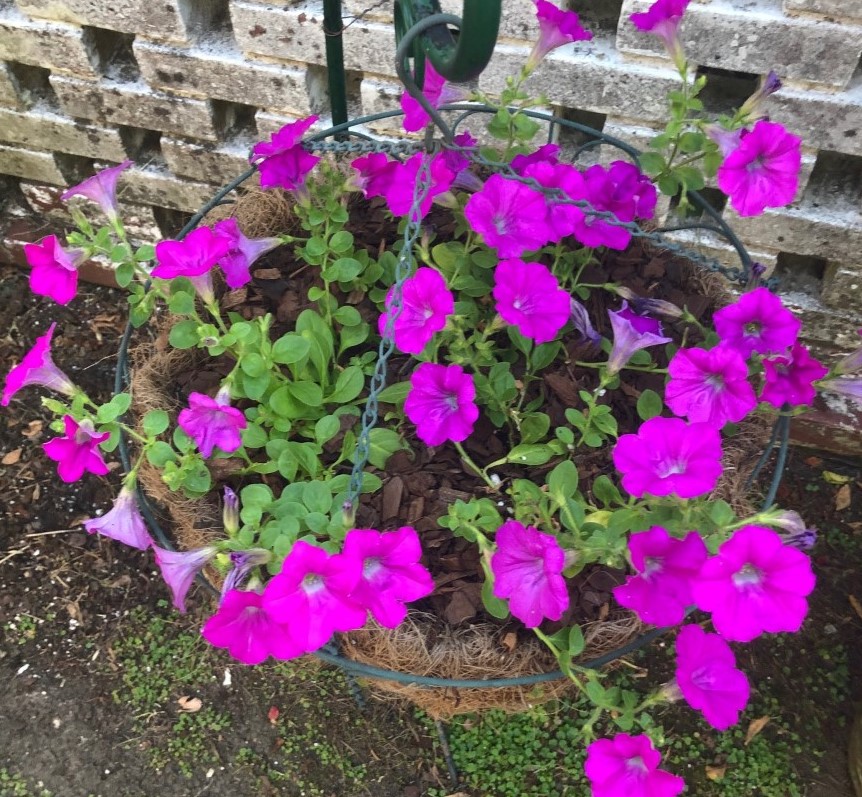
Caring for petunias
If petunias are one of your go-tos for hanging baskets, urns, or in the ground here are some tips for best results.
Care of petunias includes regular watering and as much sunlight as possible to promote multiple blooms. Spreading ground cover petunias are pickiest about water; weekly waterings should be included in the care of petunias. While petunias will grow in a partially shaded location, a fuller and more abundant bloom is produced in full sun. Soil prepared before planting petunias should have well-composted organic matter worked in. Care of petunias will include regular fertilization with a balanced, water-soluble fertilizer designed for blooming plants. As they are heavy feeders, petunias care will also include weekly feedings. Proper light, water, and fertilization when caring for petunias will ensure a long season of beautiful blooms.
Petunia varieties and characteristics
Grandiflora
- Flowers are 3-5 inches across; flower forms can be single or double and some are ruffled
- Most grandifloras have a mounded habit but a few are trailers.
- The flowers don’t hold up in bad weather, have fewer blooms and the plants can become rangy late in the summer
Multiflora and Floribunda
- Flowers are smaller than grandiflora; available in singles, doubles, upright, and cascade.
- Plants are more compact than grandifloras.
- These bloom prolifically; plants are more weather-resistant than grandifloras
Wave Petunias
- A newer type of petunia series.
- They are actually a floribunda-type petunia and are seed grown.
- The series started with purple wave and has gone on from there.
- All the wave petunias have, to varying degrees, a cascading/prostrate habit.
- Waves are very heavy feeders and should be fed weekly with a water-soluble fertilizer and a slow-release fertilizer such as Osmocote should be incorporated into the soil at the time of planting.
Supertunia
- A newer type of petunia series; flowers are 3-4” across.
- They are vegetatively propagated known to vine more than 3 feet in length.
- Supertunias are also very heavy feeders and should be fed weekly with a water-soluble fertilizer or a slow-release fertilizer.
Surfina Petunias
- These are typically the plants seen in Europe cascading from flower boxes.
- They aren’t quite as aggressive as supertunias, making them more manageable.
- Many of the Surfina varieties have a distinctive veining pattern in the blooms.
Calibrachoa and Million Bells
- Calibrachoa isn’t a true petunia, but looks like one and can be treated as such.
- The fast-growing plant has a low-growing, compact habit and it blooms prolifically all season long. Calibrachoa is vegetatively propagated.
- A good range of colors is available.
- Prefers being planted in containers rather than flower beds.
While we are on the subject, as beautiful as they are, I have a love-hate relationship with Million Bells. My sister and I call them, here today, gone tomorrow. I have talked to many gardening experts about this beautiful specimen in the petunia family. I always get advice like, “water more” or “water less” “feed more”, blah, blah, blah. I’ve tried all of that over the years and, yet, they can still disappear almost overnight. Exasperating!
But I still love all of the varieties, even occasionally a Calibrachoa, especially when I see pictures of them, in someone else’s garden.

